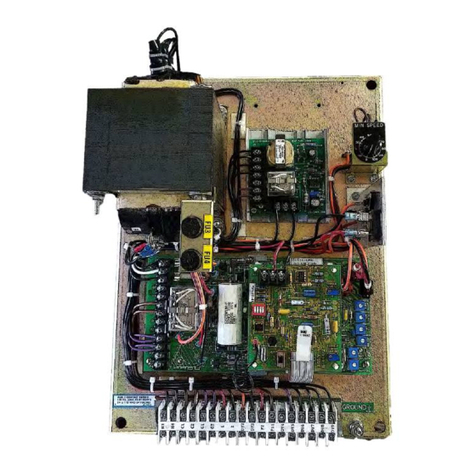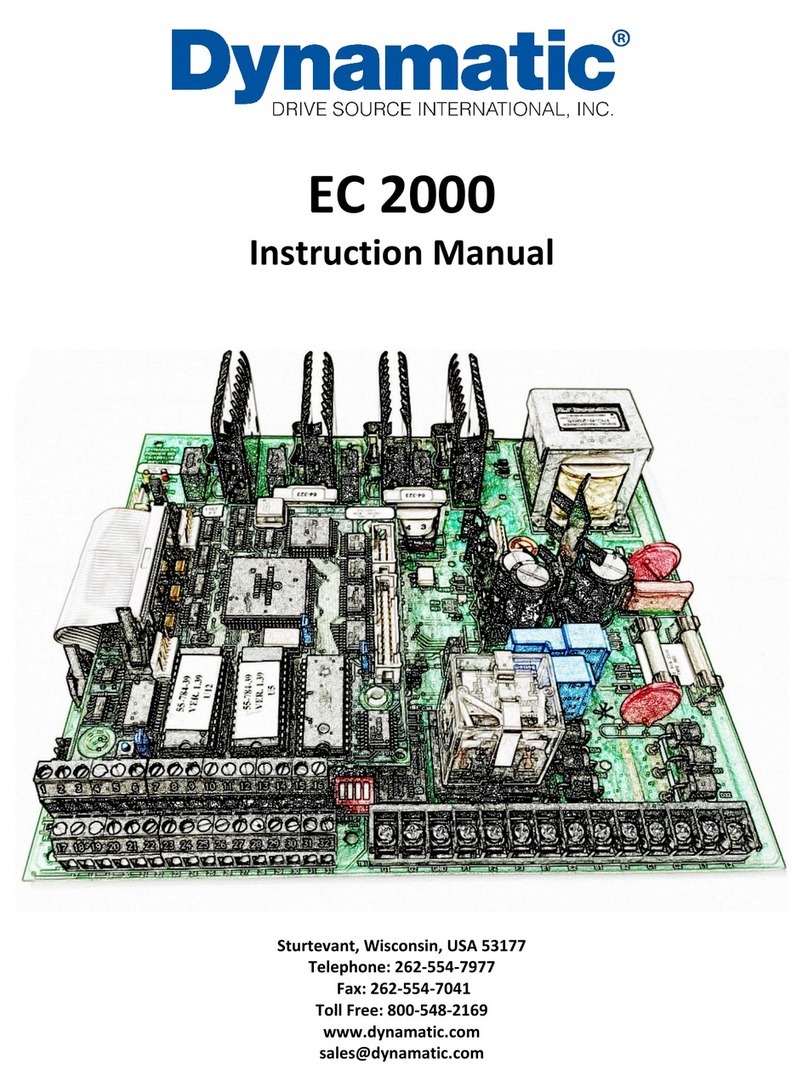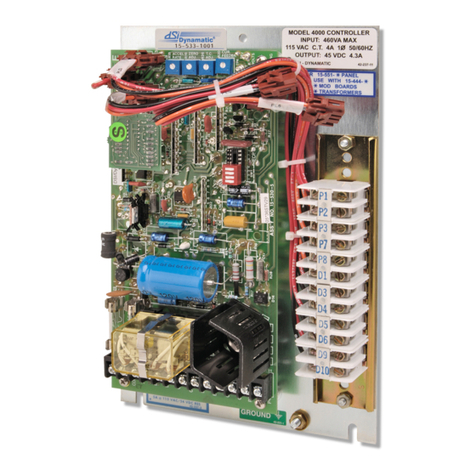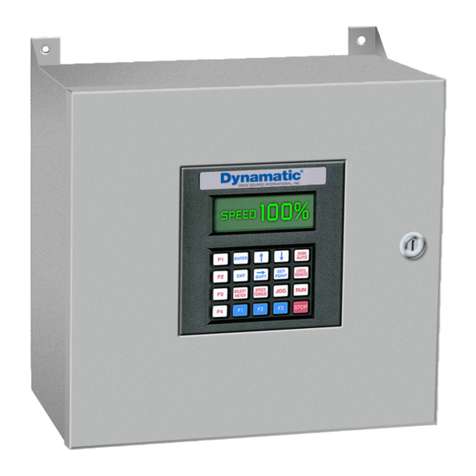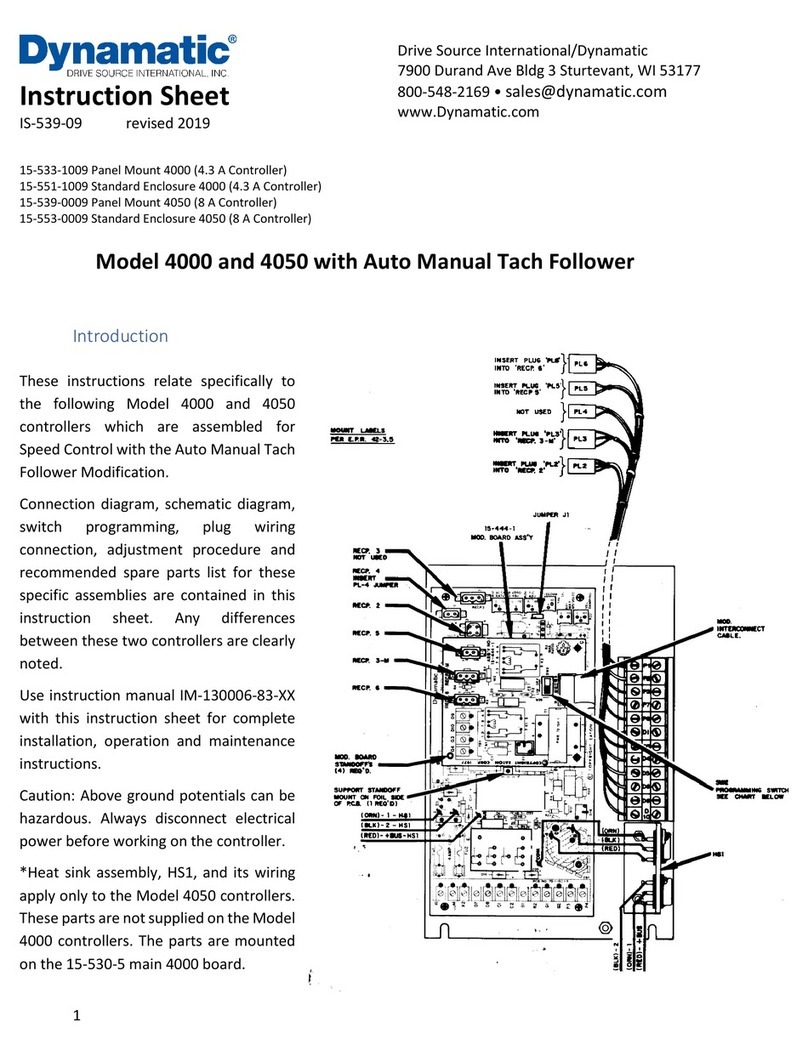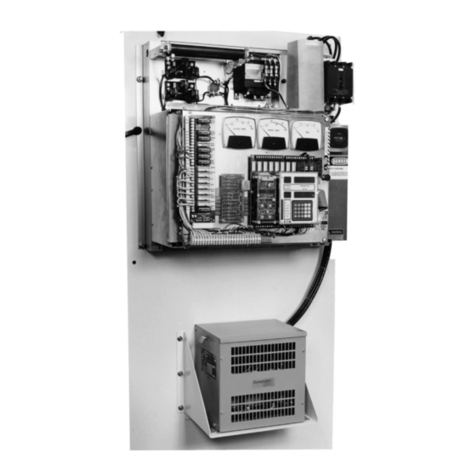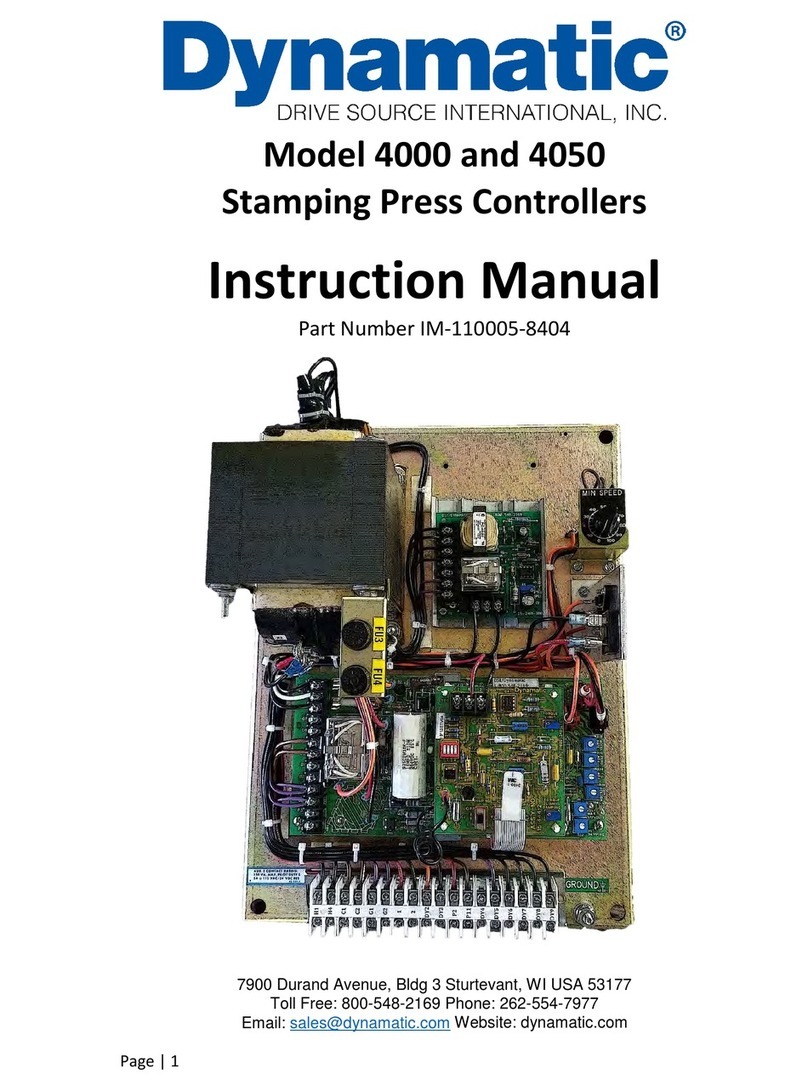
10
The clutch voltage should drop below 45V. This will be approximately the maximum rated speed
of the drive. The maximum speed point setting will vary with different mechanical units.
There are two other conditions for which the LED will be out besides the drive being set for zero
speed or running wide open above the regulating range. These are whenever the “E” relay is
deenergized (the drive is stopped), or due to a wiring error, ground or some malfunction of the
controller itself.
Max Speed/Volts R21, Alternate Methods-
a. To set maximum rated speed with a tach or stroboscope: turn the Manual Speed
potentiometer R5 to 100% (Full CW). Allow the drive to accelerate to full speed, Turn the Max
Speed/Volts pot CW until the rated speed indicated is the same as the speed listed on the
nameplate of the mechanical unit.
b. To set approximate maximum speed with a voltmeter, connect a voltmeter (60 Vac scale)
across terminals G1 and G2. Turn the Manual Speed pot R5 to 100% (Full CW). Allow the drive
to accelerate to full speed. With the drive at full speed, turn the Max Speed/Volts pot CW
until the meter reading ceases to rise. Back off the adjustment (CCW) until the meter reading
just begins to drop. This is the point of maximum speed.
c. To set a maximum speed that is less than rated maximum speed requires the use of a
tachometer or stroboscope indicator. This cannot be accomplished with the LED status
monitor. Turn the Manual Speed potentiometer to 100% (Full CW). Allow the drive to
accelerate to full speed, slowly increase Max Speed/Volts potentiometer setting CW until the
desired speed is indicated.
5. Since there may be some interaction between the Zero Adjust and the Max Speed/Volts,
particularly if the minimum speed is other than zero, repeat steps 3 and 4 until the desired speeds
are obtained for both the zero and max positions of the Manual Speed pot.
6. Time Constant (TC) Adjust R26-The TC Adjust is used to set current feedback by using coil
voltage and a variable RC combination to simulate the different coil time constants of various size
drives. A trimpot illustration is provided to facilitate the setting of this control. Sufficient range
has been provided for drive sizes from fractional through 20 hp for the 4000 controller and up to
125 hp for the 4050 controller. Set you TC control appropriately for your individual drive size as
shown in Preliminary Adjustments.
Settings are not critical and so may be “tuned” for each drive. High inertia applications can benefit
from a higher than normal setting.
7. Current Feedback R20*-Normal operation will not require use of this potentiometer. Certain
applications are best met with a negative current feedback responses which is slower in settling
and less likely to overshoot at low rpms. There are some low inertia, light load, linear acceleration
applications that may also benefit from improved low-end linearity with current feedback
damping. If you have one of these applications, remove Jumper J1 from the Normal position and
